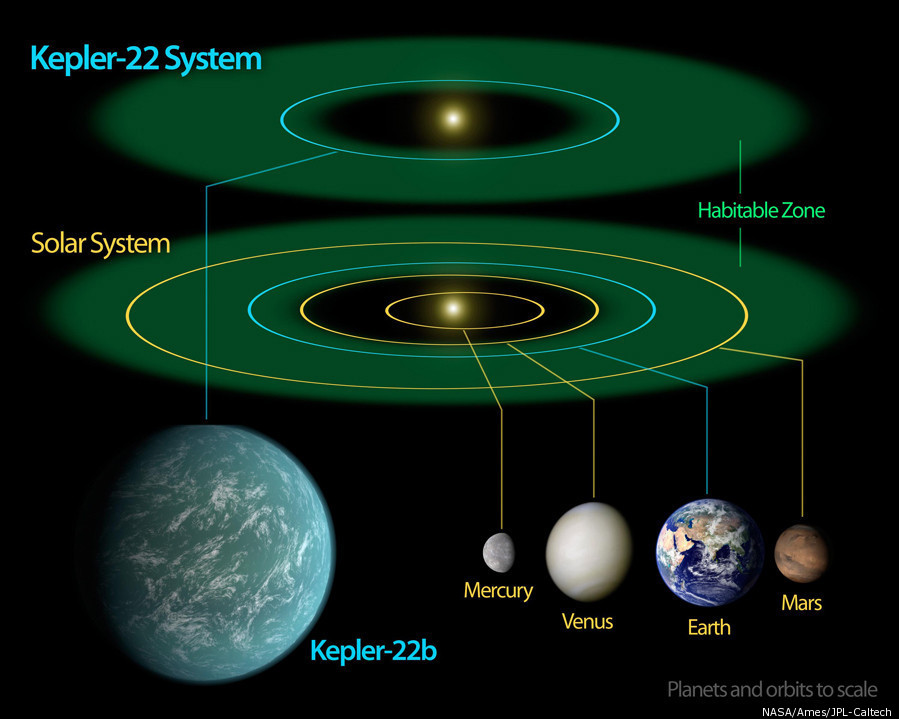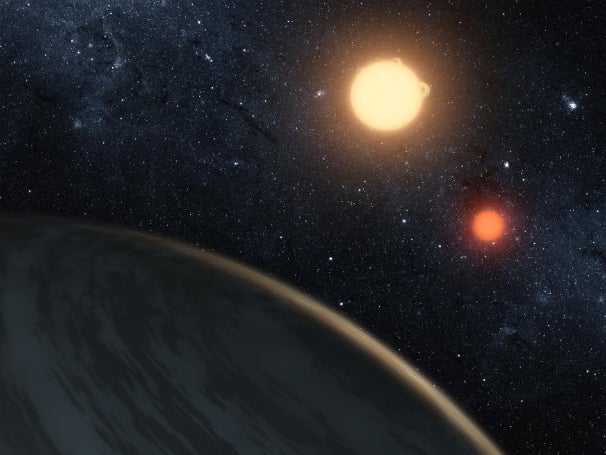New views of giant asteroid Vesta revealed months after Dawn spacecraft slipped into orbit
New views of the massive asteroid Vesta reveal it is more like a planet than an asteroid, scientists said Monday.
A new planet outside of Earth's solar system has been identified with many similarities to our own – making it the latest best potential target for life.
New views of the massive asteroid Vesta reveal it is more like a planet than an asteroid, scientists said Monday.
A new planet outside of Earth's solar system has been identified with many similarities to our own – making it the latest best potential target for life.
Kepler 22-b, which is about 2.4 times the size of Earth and lies in the so-called "Goldilocks zone", has a relatively comfortable surface temperature of about 22C (72F) and orbits a star not unlike Earth's sun.
Since slipping into orbit around Vesta in July, Vesta’s rugged surface is unique compared to the solar system’s much smaller and lightweight asteroids. Impact craters dot Vesta’s surface along with grooves, troughs and a variety of minerals.
“Vesta is unlike any other asteroid,” said mission co-scientist Vishnu Reddy of the Max Planck Institute for Solar System Research in Germany. The new findings were presented at a meeting of the American Geophysical Union in San Francisco.
Since slipping into orbit around Vesta in July, Vesta’s rugged surface is unique compared to the solar system’s much smaller and lightweight asteroids. Impact craters dot Vesta’s surface along with grooves, troughs and a variety of minerals.
“Vesta is unlike any other asteroid,” said mission co-scientist Vishnu Reddy of the Max Planck Institute for Solar System Research in Germany. The new findings were presented at a meeting of the American Geophysical Union in San Francisco.
NASA’s Kepler satellite has discovered a planet that orbits around two suns, which just so happen to be a yellow sun and red dwarf star, that is 200-light-years away from Earth—which some might say is in galaxy far away. Where have we seen this before?
It’s Tatooine! Fire up the opening crawl and the deep exploration rockets, we’re going to find us some droids, land speeders, and possibly a light saber!
Star Wars nerd overload aside, this discovery is the first ever for a "circumbinary" planet, or a system where one star rotates around the other like a planet would. A system with two stars thus far has only been theoretically possible.
the discovery of Kepler-22b, the first planet the Kepler spacecraft has discovered in the habitable zone, an area with a distance from a star where temperatures will permit the existence of liquid water.
The discovery of Kepler-22b, which is 600 light-years away from Earth, brings scientists one step closer to finding a planet that could possibly harbor life.
Kepler-22b has several Earth-like characteristics: Its temperature is around 72 degrees Fahrenheit and its radius is 2.4 times Earth's. The planet completely orbits its star, which is similar to our sun, every 290 days, just 75 days shy of an Earth year.
The planet, named, Kepler-16b is roughly the size of Saturn and it completes its orbit around the suns once every 229 days.
French astronomers earlier this year confirmed the first rocky exoplanet to meet key requirements for sustaining life. But Kepler-22b, initially glimpsed in 2009, is the first the US space agency has been able to confirm.
“We have now got good planet confirmation with Kepler-22b,” said Bill Borucki, Kepler principal investigator at NASA Ames Research Center.


No comments:
Post a Comment